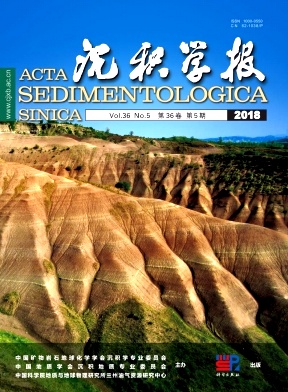Chemical Weathering Characteristics and Its Climate Significance of Holocene Loess-paleosol Sequence in Tianshui of Gansu Province
doi: 10.14027/j.issn.1000-0550.2018.138
- Received Date: 2017-10-31
- Rev Recd Date: 2018-05-24
- Publish Date: 2018-10-10
-
Key words:
- loess-paleosol sequence /
- geochemistry /
- Shijiaya /
- major element /
Abstract: The analysis of major elements in samples from the Shijiaya(SJY)profile in Tianshui of Gansu Province, China showed the similar curves trend of SiO2, Fe2O3, K2O, and Al2O3, with relatively high concentration all in the paleosol layer while lower in the loess. However, the variation tendency of CaO and Na2O were different from that of SiO2, Fe2O3, K2O and Al2O3. Some typically chemical parameters in the SJY Profile such as K/Na radio, Ca/Mg radio, residual coefficient, leaching coefficient, the chemical index of alteration(CIA) indicated that chemical weathering was strong during the paleosol deposition and weak during the loess loading. Chemical activity of various elements on the section showed obvious variability. Compared to the stable element Ti, other major elements such as Ca and Na were migrated and leached, while the elements Si、Fe、K and Al were enriched, probably indicating some incipient stage of chemical weathering. The chemical weathering process of the Shijiaya profile could be divided into three stages, the stage of regional chemical weathering was relatively weaker, then it was unstedaily stronger and finally became weaker and weaker. The climate was cool in early Holocene (11 500-8 500 a B.P.), generally warm and humid during mid Holocene(8 500-3 100 a B.P.), and then became no stable with climatic fluctuation at 7 000-6 000 a B.P.. In the late Holocene (3 100 a B.P.-today), the climate entered a period of relatively cool with less rain.
| Citation: | LIU JunYu, ZHA XiaoChun, HUANG ChunChang, PANG JiangLi, ZHOU YaLi, LI Yang. Chemical Weathering Characteristics and Its Climate Significance of Holocene Loess-paleosol Sequence in Tianshui of Gansu Province[J]. Acta Sedimentologica Sinica, 2018, 36(5): 937-945. doi: 10.14027/j.issn.1000-0550.2018.138 |






 DownLoad:
DownLoad: